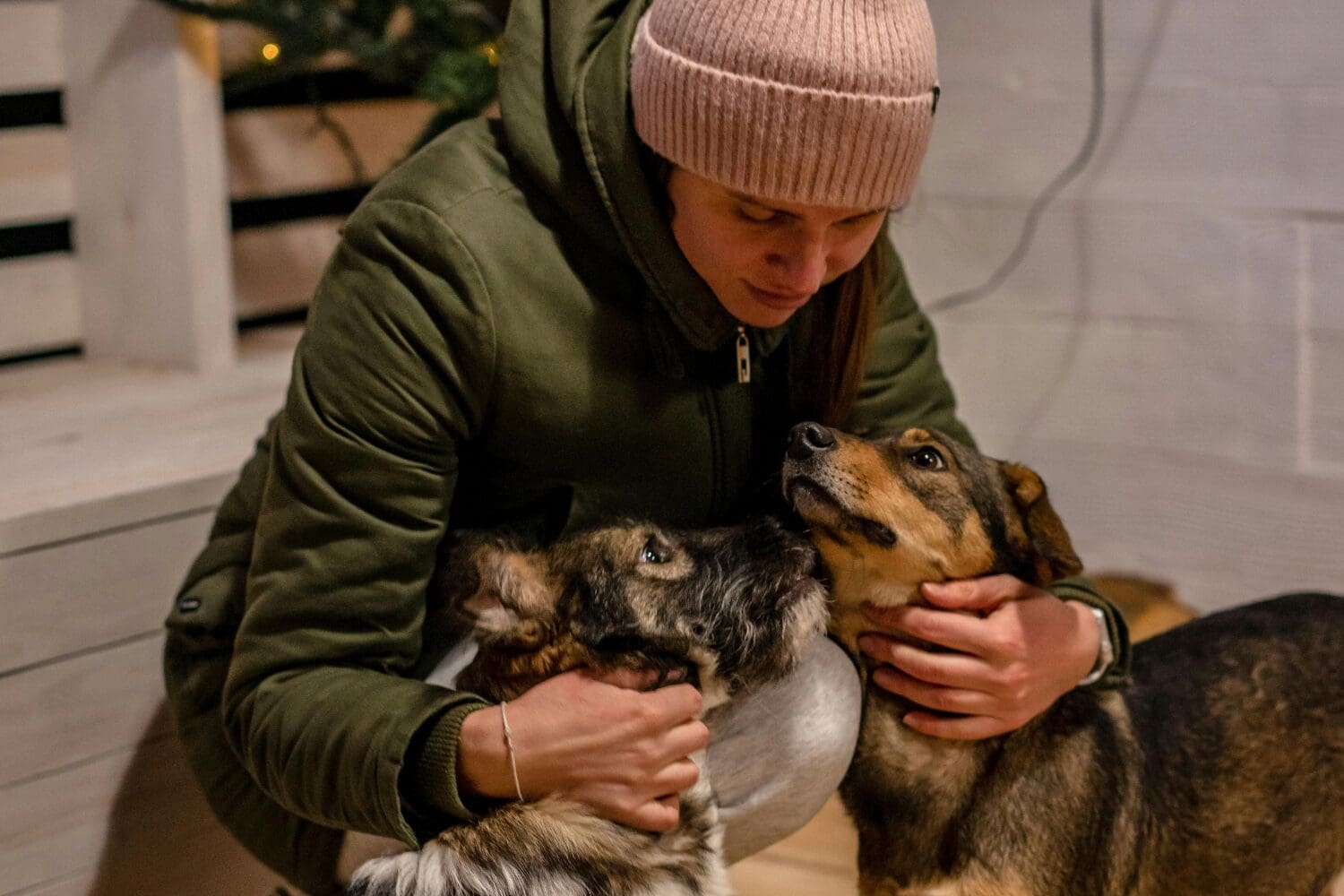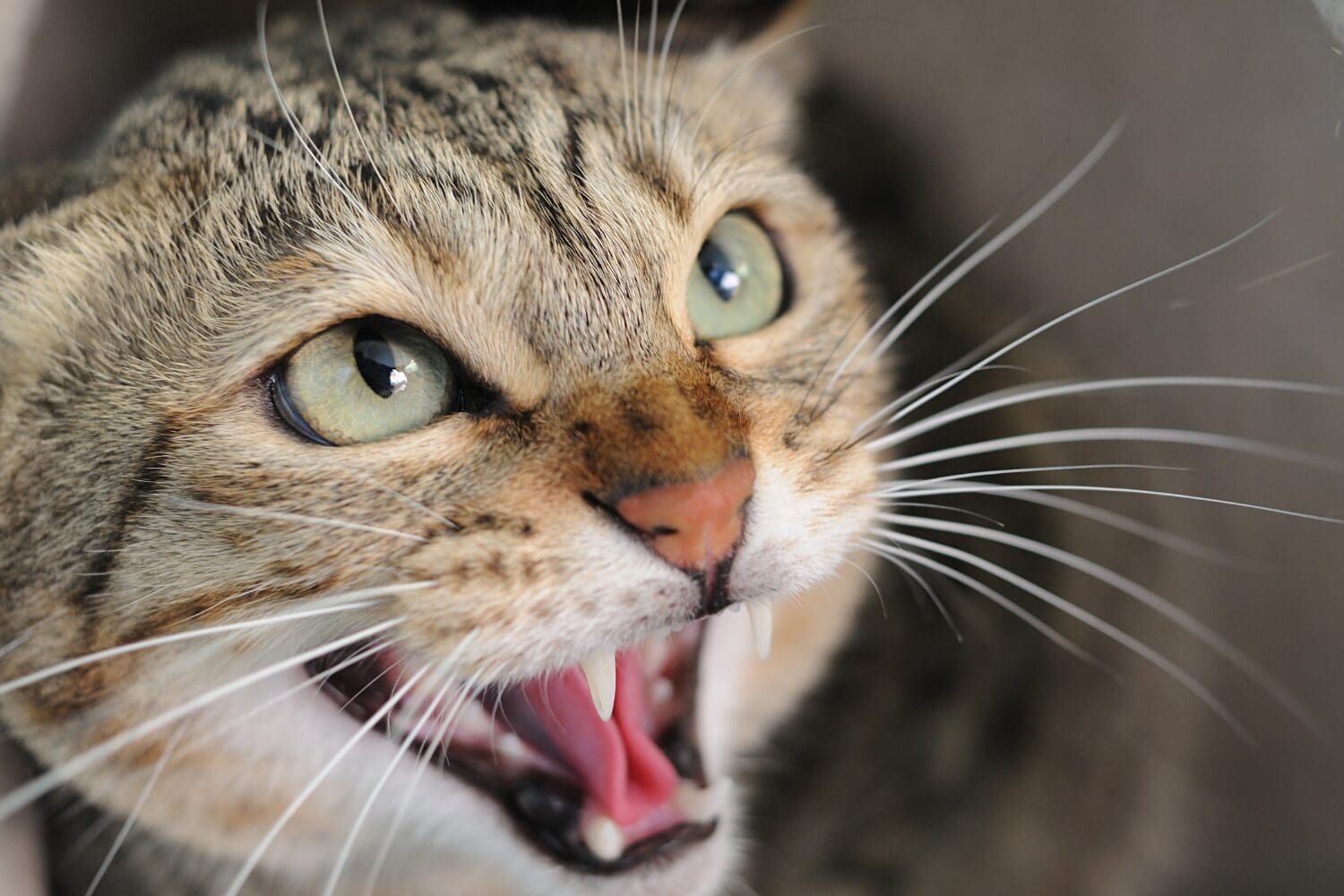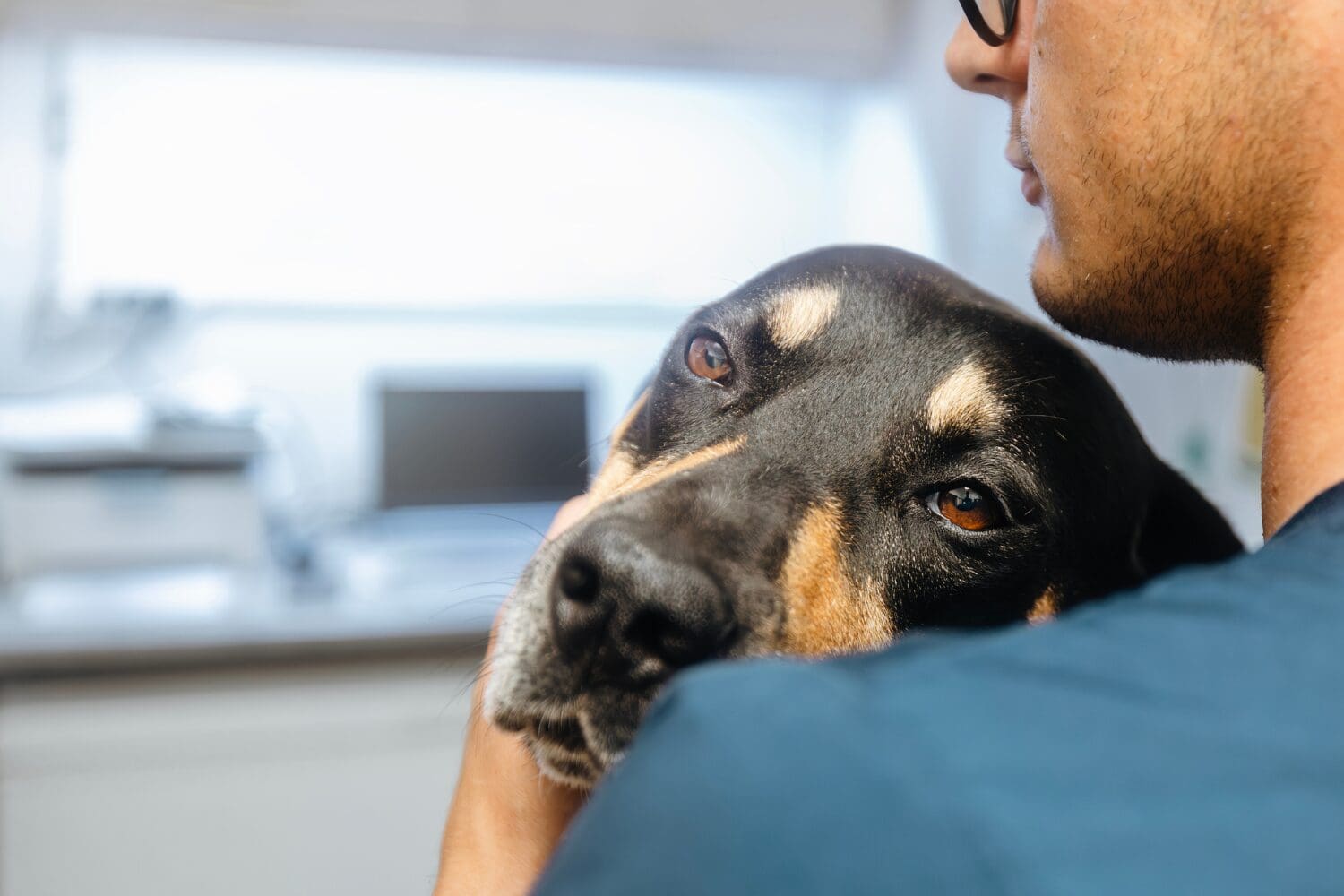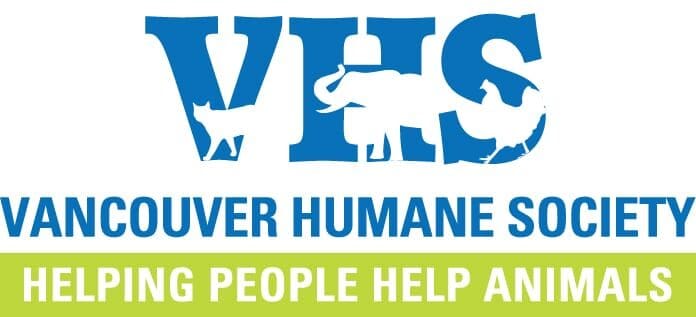Animal services and human services are two sides of the same coin.
Providing resources for humans improves life for the animals they care for, and vice versa. This month’s episode of The Informed Animal Ally welcomes Jesse Smith from the Pet Outreach program at Atira Women’s Resource Society to share some stories about working with the community to support people and their companion animals together.
Note: This written discussion has been edited for length.
- How the Pet Outreach program came to be
- What a day in the Pet Outreach program looks like
- Resources to run a Pet Outreach program
- How partnerships help animals
- Challenges faced by people in supportive programs
- Challenges faced by people in supportive programs
- How animals make a difference for their guardians
- How Pet Outreach improves life for animals
- How you can help
- Next episode
How the Pet Outreach program came to be

Chantelle: We have been looking at the wide world of animal advocacy and protection in this series, and today we’ll be diving into one aspect of this work that we’ve touched on before, which is the intersection between animal work and social work/community programs.
To explore this topic with us further, I’m very pleased to welcome Jesse Smith, the Pet Outreach Program Coordinator at Atira Women’s Resource Society in Vancouver. Jesse, thank you so much for joining us today.
To start off, I would love to hear a little bit about the history of the Pet Outreach program.
Was there a moment when you knew that this kind of support was needed in the community?
Jesse: Yeah, so that actually predates my involvement with Atira Women’s Resource Society.
Identifying the need in the community: Veterinary care
Jesse: There were two events that happened that really stuck out with leadership.
The first was that there was a resident who was living in one of the SROs (Single Room Occupancy housing) that we support whose pet had skin allergies and was having flareups all of the time, just chronic issues. He was getting really frustrated because he couldn’t afford vet care, he couldn’t afford to keep her on the prescription hypoallergenic diet and he really didn’t know what resources were available or what to do.
A person in community was just chatting with him one day and said, I happen to know your housing provider. I’m gonna chat and see if there’s something we can do.
He was able to get that care at that time, but then it just kind of was like, he’s not the only one that’s struggling with this and this is a chronic issue. This isn’t something that’s gonna be one time, and then we move on.
Identifying the need in the community: Safety precautions
Jesse: And the second was back when there was an encampment at Strathcona Park. For those of you that are not familiar with Vancouver, Strathcona is a very large central park near the downtown core that after COVID had a very large street encampment. There were many people that were living there with pets.
Unfortunately there was an incident where three dogs broke free from the camper that they had been tethered to, and they attacked a worker in the park.
And so needs for services on how to keep workers and community members safe really kind of came to the forefront.
Developing a pet outreach program: Helping people and animals together
Jesse: And so leadership realized that we have support workers for humans, so why not have support workers whose target is pets and who can kind of work on all of these issues
They interviewed and I saw the posting and was like, this sounds great.
The opportunity was to really create the program because they didn’t know what it should be. They just knew it should exist, and so they really wanted people to be involved that knew the animal world and could kind of bridge that gap between social services and pet services.
Addressing barriers to pet-friendly housing
Amy: That’s so awesome, Jesse.
Just to share another perspective on it, when I was first getting into policy studies, I worked on a paper that looked at the importance of lowering barriers to access to housing. There’s so many barriers people were facing at that time and continue to face for accessing housing.
And one of those is the lack of pet-friendly housing.
And so luckily, as a result of research that was done in the 2008 to 2011 time period, a lot of housing providers started to reduce barriers and make more housing available to pets, which is amazing.
And at the same time, like you’re saying, it comes with a whole host of additional challenges.
So in my mind, your role is the next logical step in terms of how we merge the work that we do and that you do. People and pets are always together.
I’m really excited about your role and I think there’s a lot of opportunity for other housing providers and social service providers to have programming like this.
What a day in the Pet Outreach program looks like

Amy: The program certainly has a broad scope ranging from helping people access food and supplies, to directing folks to resources for support with veterinary care and pet boarding. If we were to spend a typical day shadowing you, what would that look like?
From basic needs to critical incidents
Jesse: Well, we’ll start to say that there is no typical. Every day is different, which I love.
The work shifts and flows with the community and what the needs are of that day. So you need to be versatile and you really need to kind of have the ability to triage, starting from getting your phone calls.
So I’ll come in, there’ll be messages. We run a mobile food bank. So a lot of calls are just like, Hey, I’ve run out of food, I’ve run out of litter. Can I come pick up or can you deliver?
So can be anything from really basic to, there might be a critical incident that happened that evening while our phones were off. There may be an injury or like severe illness that’s happened and something that requires immediate vet care.
Accompaniments to vet visits
Jesse: Some days we do have scheduled appointments. So we know where we’re going and what we’re doing, and kind of have to coordinate that time off.
We do a lot of accompaniments to vet visits.
When we first started, we would just kind of book the appointment, give a taxi voucher and say like, okay, good luck. We learned really quickly that that wasn’t what the community needed. And we had folks ask, can you accompany us to vet appointments? We would really love to have an advocate there.
So we drive them. We use that time in the car to kind of figure out what they need during that appointment if they want us to chat for them if they want to just chat and have us kind of as backup.
I’ve had people tell me, even if you don’t say a word, I just feel stronger with you there. I know someone’s not going to treat me different.
And you know, the clinics we work with are great. They know the community that we’re working with. They work with a trauma-informed approach, but that fear of being disrespected in other areas, still, it stays with you. There’s anxiety that comes up, and so we learned really quickly that that was an important piece of the work is to be a physical presence with folks when they’re doing appointments.
Behaviour advice
Jesse: We do behaviour advice. Sometimes we’ll do a basic dog training. A lot of people just wanna talk about their pets and make sure they’re doing the right thing.
We’ll take any call that’s animal related, whether it’s staff calling about, there’s a lot of dog reactivity because there’s a lot of intra-dog aggression that’s happening.
Working with staff in a building to create safety plans for residents. Maybe there’s been a bite incident in a building. Those are starting to be more rare now that we’ve come around. But when we started, there was just a lot of kind of general chaos in some of the buildings, and so having strong pet policies is huge.
Mobile pet food bank
Jesse: But I think the mobile pet food bank is something that’s unique.
We started with just kind of realizing that there were a lot of people in community that couldn’t leave their places, whether that was because of their mobility or due to maybe being entrenched in having heavier substance use days where they just couldn’t make it. There’s a range of reasons why people aren’t able to make food bank times, and so being able to get those supplies to them was huge.
The importance of advocacy and safety plans
Amy: Thank you so much for summarizing all of that and I can really get a picture of what your days look like. I’m really grateful for that work you’re doing accompanying folks to veterinarians.
Because in any case when you have a practitioner who has the knowledge and you have an individual who isn’t an expert, you have a power dynamic that exists automatically there, and then that power dynamic is further reinforced through marginalized identities. There’s often a language barrier.
When any guardian’s at the vet, they are in a heightened state of stress, including myself. I don’t remember half of what’s said, and then after I’m trying to figure it all out, and so I’m just so grateful that your program is offering that.
And as well, thinking about those interactions in buildings. I know any building, if you have an elevator, you’ve got an elevator door that opens and suddenly there’s two dogs face to face and everyone’s like, What do we do?
So just knowing that that’s the reality and building systems and communication can help so much in reducing conflicts and creating a language of animal behaviour that’s positive and connecting between guardians, which I think helps build community.
Jesse: I want credit one of the buildings that we work with. The residents there were the ones that taught me the best safety plan. It’s really cool that you get to go to all these different buildings and you get to learn from the community itself on what’s worked for them and bring that knowledge to another building that might not have it.
So while maybe I’m credited with sharing that knowledge, I didn’t create the system. There’s already these people in community that are doing similar work.
Avoiding dog conflict in shared stairwells
Jesse: A lot of these buildings, they’re a hundred year old rooming houses, right? They’re old. The stairwells are very narrow. So if, like you say, the elevator opens and you’re face-to-face with another dog, it’s the same in the stairwell except you’re kind of cornered.
So a lot of people like have learned to like holler when they’re coming, “DOG IN STAIRWELL” and just alert community that they’re coming and it kind of goes down the stairs if other people hear them.
These little things make a huge impact in those spaces.
Chantelle: What a wonderful resource to be able to share that information between buildings and between communities.
Resources to run a Pet Outreach program

Chantelle: You do so much, and I’m wondering what resources it takes to run a program like this and how many animal guardians you support.
Partnerships with Vancouver organizations
Jesse: I mean, like all program, money is helpful for sure, but we started with $0 in our budget and managed to make that work for a little while.
We’re really lucky in Vancouver that there is a plethora of really cool external resources for us to pick from.
The Vancouver Humane Society with the McVitie program is huge. It benefits a wide population. We’ve reached out many times for clients.
There’s the BC SPCA, they have great food banks. Their vet clinic is awesome.
Community Vet Outreach. Does really cool clinics at least four times a year. They’ve also started doing a couple spay/neuter days.
Paws for Hope has a really great low barrier foster program.
Without all of these external resources, I wouldn’t be able to operate the way that we have been.
Pet Outreach team collaborates with community
Jesse: In terms of our internal resources, it definitely takes staff that are able to really meet the community where they’re at. Not having your own ideas of what people need or what should be done.
You’re not coming in with an attitude to save pets. These pets are fine! They’re doing great. They have loving homes. Their owners just may need a little bit of support in other areas.
And I think that’s been like kind of the biggest one for me. You know, when I talk to external folks that aren’t really in this sort of work, they say, it’s so great that you’re in there saving those animals. It’s not really what I’m doing.
We’re working with the people and they’re doing that work, and we’re just here to just be community mutual aid. We’re definitely not coming in rescuing animals.
Supporting pets in 30 buildings (and growing!)
Amy: That’s awesome. How many animals do you think you help out each year?
Jesse: That’s a hard one. With 30 buildings that we’re supporting, those buildings range from, I think our smallest has about 20 units, and then the largest has 120 units.
Not all folks have pets, but all of our buildings that we work with are pet-friendly, which means folks can have up to two dogs or two cats.
There’s some people that we assist maybe one time, and then there’s others that we work with on a weekly basis. So it’s really dependent.
Amy: That sounds like a big community that you’re working with.
Jesse: Yeah, Atira is going through some changes as well. And so we are hoping to expand our programming to go outside of our buildings.
The organization has let some buildings go and they’ve gone to other organizations like PHS or community buildings, and we are still working with clients that are in those buildings. So we’re not saying, Hey, you’re no longer with our organization as the housing provider. We’re not gonna offer you services anymore. We learned really quickly that that wasn’t fair to community.
And so we are still servicing those buildings and those residents.
Amy: Oh wow. And so how many people are on your team?
Jesse: Two, myself and Jill Morisset.
How partnerships help animals

Amy: You spoke about some of the organizations that you partner with. Do you have any stories of animals that you’ve provided services to that stand out with that involved partnership?
Jesse: I think that a lot of the ones that stand out for me are sad. I really get kind of enmeshed in the end of life care.
We truly believe that there should be dignity in death and that animals and people deserve to have the space and time that they need to have those appointments go the way that they should.
A lot of our partnerships have really involved other organizations taking that time to allow us to have extra appointments to go through that.
How a spay surgery helped a dog and her guardian find better housing
Jesse: I do have another one, which is, there was this dog who used to live at Crab Park.
She lived there for a lot of years. She had a lot of puppies. So you’ll actually see a lot of dogs in community and you can tell, oh, that’s her baby. She has a long lineage. Her kids have had kids, that sort of thing.
Her guardian rehomed her to a friend who was living in one of our supportive housing buildings, and she came on our radar a bit stronger than she had been before. We had been providing food here and there, but nothing really major.
We got in touch with her there because she was pregnant, and so staff are really worried, Hey, there’s this new dog in the building. She’s pregnant, she’s about to have puppies any day. What do we do?
The guardian really did not want to connect with us at all. We would knock on her door, Hey, we have puppy food. Does your dog needs puppy food while she’s going through this? We’d just hand her stuff through the door. We didn’t make any connection. We didn’t push anything. We just handed her food through the door.
We were able to get supplies from the BC SPCA’s Charlie’s Food Bank. They really helped us out with getting a pen. They helped us out with getting pee pads when we needed them. Just kind of filled us up on puppy stuff.
A neighbour downstairs who is a good friend of hers vouched for us and helped us get our foot in the door and make a better connection with her.
And then it became more open door, and then we were able to meet the puppies. We were able to talk to her. Our relationship really grew from just being able to kind hand her things and back off and leave.
And then after the puppies were gone, we had talked to her about maybe getting the dog spayed. She wasn’t really interested. That’s okay.
But as they needed to move, some of the other buildings around had more rigid pet policies. So if you’re going in with the dog, they need to be spayed or neutered.
She was missing out on other opportunities for housing and said, I’m ready.
Community Vet Outreach had had her on a list for spay neuter clinic that she didn’t take previously. And then they said, if this will get her better housing, we can book it through our regular clinic, and took her outside of one of their clinic days and just got it done on a day that worked for her.
She was able to move into a really nice suite and unit.
And that wouldn’t have happened if there wasn’t these external organizations that we already had strong relationships with that we were able to just kind of call and say, I need help today or tomorrow. They can’t wait.
You have to build those relationships with those external partners and so I’m really, really grateful to everyone that we work with that I’m able to just pick up the phone and say like, Hey, I have someone. They need this thing tomorrow, can we do it?
And often the answer is yes and it blows my mind every time the answer’s yes.
Amy: Oh, I got goosebumps.
Chantelle: That’s so fantastic that you have those connections. I’m so glad that she was able to get housing that fit her needs.
Jesse: I would like to say that anytime a building is being closed, people are offered like housing that’s the same or better.
And so for her, she always had housing options, but to get that step up, to have her own bathroom in her unit is life changing So she got to do that and it was because of a dog spay.
Amy: Yeah. And from our side, we see so many pyometra issues or late stage mammary cancers and such. So from the dog’s perspective, she got a improvement on her life as well, knowing that she won’t run into those situations in the future.
Challenges faced by people in supportive programs

Chantelle: What are some of the challenges that the people you serve who share their lives with pets can face?
Jesse: I would say the same as any of us that have struggled with not having income. I know when I was younger, I struggled myself with affording my vet bills.
When we started, it was important for me to not go into the work assuming what the issues of the community were. We really did a lot of just knocking on doors and saying hi, I’m here. What can we help you with? What are your challenges?
I was pretty amazed at how open the community was. I don’t know if you’ve ever had someone knock on your door, but I’m usually pretty closed off if someone knocks at my door. And so it was really cool that I was knocking on all these doors and having people be like, yeah, come on in, come meet Charlie. I wanna talk to you about my pet.
The top needs that we found that people were having challenges with were:
- food insecurity,
- access to spay and neuter,
- health concerns.
We did see a lot of UTIs, ear infections, skin infections, chronic allergies.
We saw some behaviour concerns, cats peeing outside of the litter box. You know, the behaviours that come from being an intact male or female cat.
We saw some safety concerns. People were worried about how to go through the hallways if their dog was reactive or if other dogs were reactive to them.
And then we also had a lot of people that brought up the concerns of who would look after their pet if they needed to go to the hospital, or if they were in arrested, or if they wanted to go to detox.
You know, people found that was a huge barrier in their lives: either daycare, short-term foster, long-term foster.
Challenges faced by people in supportive programs

Amy: I’m curious how the program work that you’re doing strengthens the rest of the work Atira does and the communities you serve.
Jesse: I think pets open the door for a lot of people. If you want to talk to someone and you ask them about their pet, people are really open about chatting with you about their pet.
And once you have that connection, you’re more likely to share other things and other aspects of your life that maybe you’re struggling with or challenges you have.
I am really lucky Atira is a big organization. I have so many colleagues who are experts in their fields. So if someone is struggling with their mental health, I can pull in someone from somewhere else and say meet my friend, they’re great. If they need help with housing, I have a person for that.
I find that pets just open those doors, and then I don’t take that place of social work. You know, I’ll listen to someone when they talk to me, but I will tell them, I’m not a social worker, I’m not a nurse. I don’t have that expertise. But I can help you find the right person and I won’t just forget about you.
Like I will find them. I’ll bring them, I’ll come with you. We’ll do an intro together. But I’m really lucky in that we’re able to provide this wraparound care for folks.
Amy: I love that term, wraparound care.
Chantelle: That’s wonderful to hear people care so much about their pets. It’s a wonderful first step to reach out to somebody.
How animals make a difference for their guardians

Chantelle: Could you tell us more about the bonds between the people you serve and the animals that they have in their care, and what role those animals play in their guardian’s lives and wellbeing?
Jesse: I think anyone that’s shared their life with a pet can relate. You know, what does your pet mean to you?
I know for me, my dog is everything. She’s the first being that I interact with in the day, and she’s the last one that I interact with at night. She comes bed with me. It’s just such a comfort.
It’s the same for the folks that I’m connected with. We all have that bond with our pets.
I will say I don’t ever wanna speak for the community that I’m working with, and I will say every relationship is different.
Recently one of my clients that I’ve been working with quite closely lost her dog, who was her best friend, and this dog had been her best friend’s dog.
And then her best friend died and she took in her dog, and then her dog had cancer. And it was a really long process for us to kind of go through these appointments together, coming to terms with, when are we going to make this appointment?
She said to me, her dog is the only one that’s never done anything wrong to her. That really stuck with me.
I was like, that’s how I feel about my dog. My dog has never done anything to wrong me. Ever. And that’s such an important relationship.
Amy: Oh yeah. I really appreciate you saying that you don’t wanna speak on behalf of the folks that you’re serving. And I know I personally have struggled with mental health challenges and I can speak on behalf of myself too, to say my dog is the one who gets me out of bed, she’s the one who gets me outside.
And certainly I think that is echoed very much across the span of people who are marginalized, people who aren’t marginalized, all income levels. There is this like mental health benefit and connection. Thank you so much for speaking to that.
How Pet Outreach improves life for animals

Amy: You spoke to this a bit, but if you have any other thoughts on it, how does this program improve the lives of the pets that you help?
Jesse: Going back to the challenges that folks are having, we aim to break down those barriers and have folks be able to access support for any sort of need that they might have.
Disaster response for pet guardians
Jesse: Another piece on top of that is we’ve created a disaster response, is kind of the best way to put it. It started with the Winters Hotel in Gastown. We realized that there was a need for emergency response on a large scale.
We had a fire back in June on Granville Street that was a building that has about 120 units in it, and we were able to have staff on site within a couple hours with supplies.
People had evacuated with cats without carriers; people had evacuated with their dogs without them being on leash. And we were able to be at the scene and be at the triage center with carriers, with leashes, with pet food, with litter, with temporary things.
How you can help

Chantelle: We’ve got a lot of listeners at home who are very keen on helping animals. So is there anything that our listeners could do to help people who are in these vulnerable situations stay with their animal family members?
Become a foster for emergency care
Jesse: Absolutely. Be a foster.
I don’t know if that’s something that you’ve ever considered. Maybe folks are apprehensive about being a foster for a shelter animal because they’re worried about behavioural challenges.
But when you’re a foster for an animal that already has a home, they’re a lot easier. They’re generally a lot more used to being in a home. And so you might not see as many challenges as you would with the shelter dog.
I know Paws For Hope is always looking for fosters; Safekeepers Program through the BC SPCA; as well as For the Homies, which is a new one that’s working out of the Downtown Eastside.
Being a foster home for an already owned animal that has a loving home can save that human’s life.
Maybe they are not going into detox because they’re worried about what’s going to happen to their pet. We see a lot of people with really bad infections that need to go to the hospital for IV treatments. They need to stay in the hospital for a week and they don’t have anyone to take care of their pet. They don’t go or they go when they are absolutely needing to, and then they leave immediately after.
If they have a foster that can look after their dog or cat while they are getting that treatment, they’re more likely to stay and get the care that they need that can save their life.
So if you’ve been contemplating being a foster, if you’re even like considering it, I urge you to be a foster for one of those three programs or if there’s one in your city that’s not Vancouver.
Donate to help animals
Jesse: Donating finances is always helpful. You can donate directly to our program through our website at atira.bc.ca. You just need to specify that it’s for the Pet Outreach program.
I would also urge you to donate to the McVitie program through the Vancouver Humane Society. We have used their resources and their funding so many times. Anyone can access it that is low income in B.C. and needing life-saving veterinary care.
I know that it’s really helped us, especially when we were starting out and we didn’t have any finances of our own to help pets. The Vancouver Humane Society really stepped up and helped us with some of the animals that needed care.
Volunteer to support seniors’ pets in their homes
Amy: Thank you for listing those. One more that I would add is ElderDog. It’s an organization that you can volunteer with and you can walk dogs for people, things like that.
So you don’t actually have to take them into your home. But that makes a huge difference when guardians have to go into hospital or things like that. Their program particularly is helping folks that are elderly.
There’s so many different ways that you can get involved in different levels of commitment.
Next episode

Please check out next month’s episode on veterinary social work!
